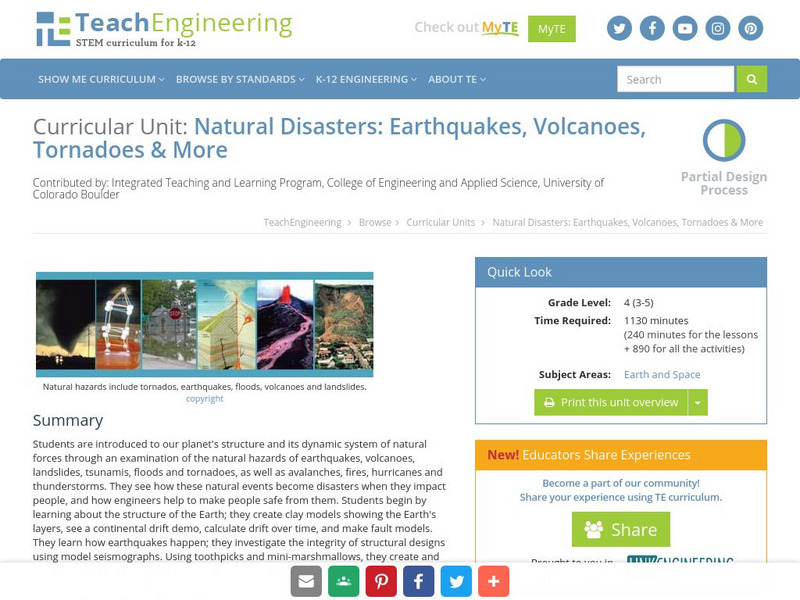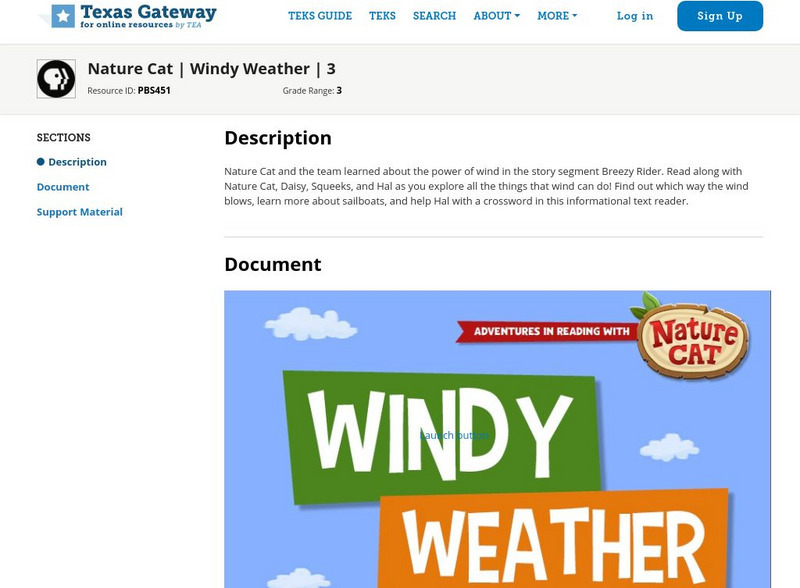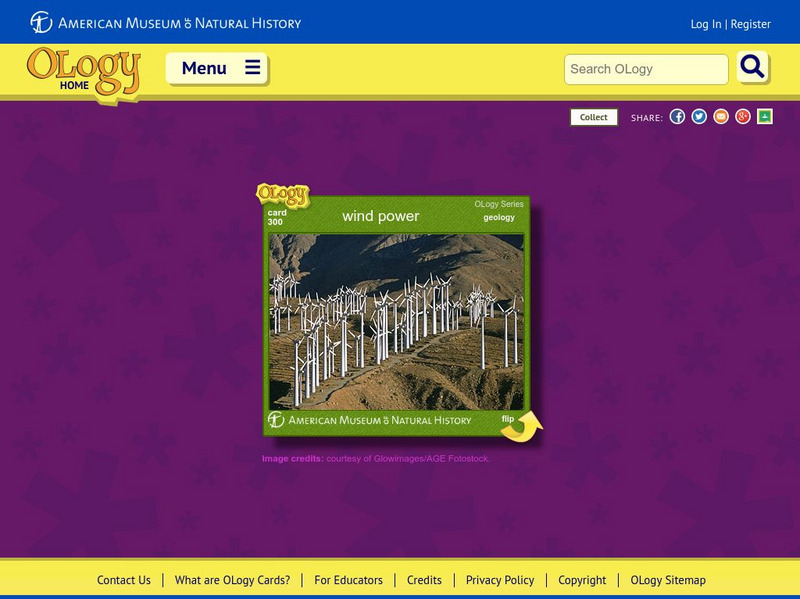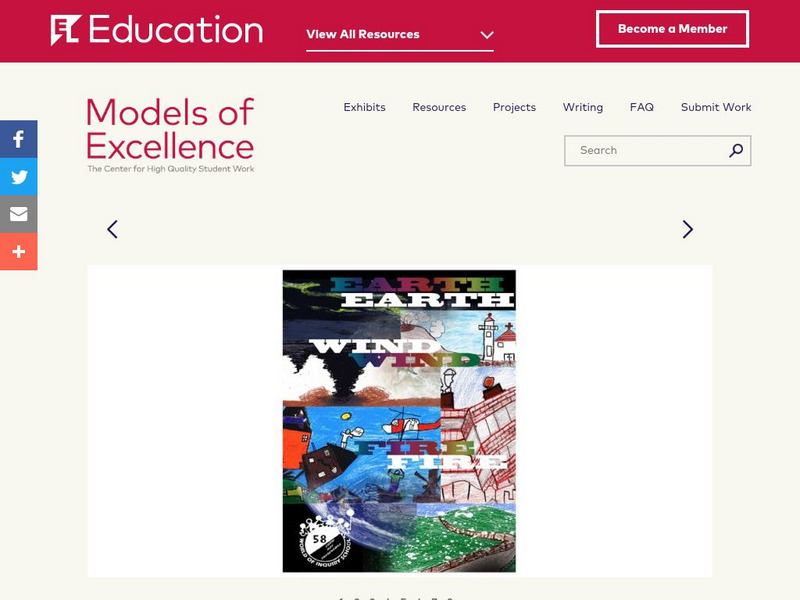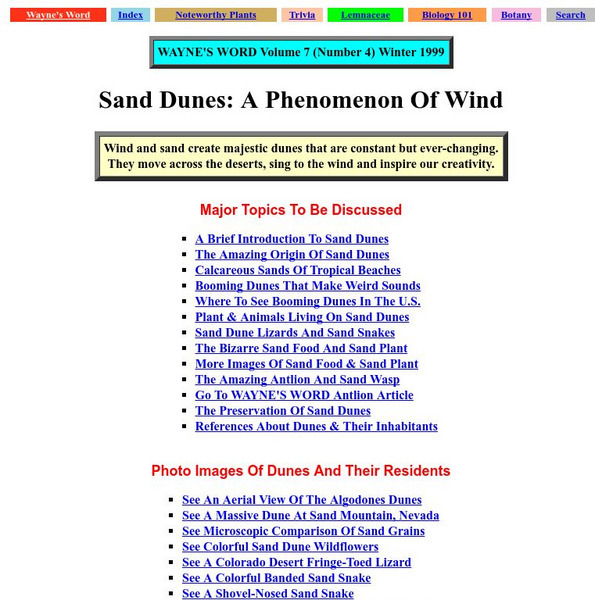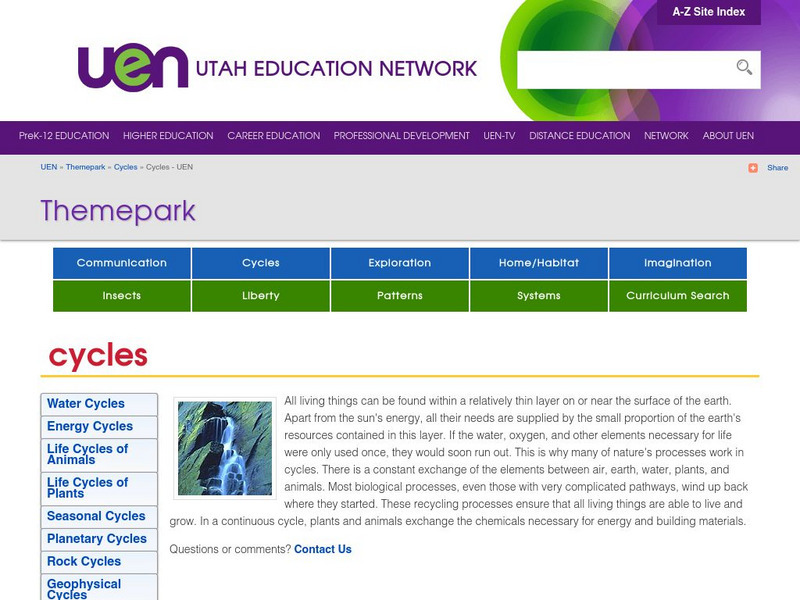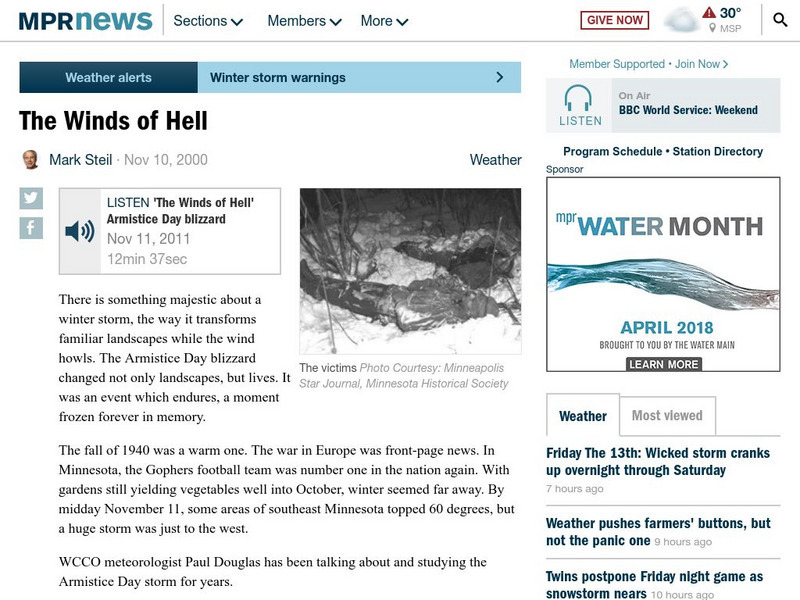TeachEngineering
Teach Engineering: Natural Disasters
Students are introduced to our planet's structure and its dynamic system of natural forces through an examination of the natural hazards of earthquakes, volcanoes, landslides, tsunamis, floods and tornados, as well as avalanches, fires,...
American Museum of Natural History
American Museum of Natural History: Make Your Own Weather Station
Students can plan and carry out investigations of local weather patterns by building their own weather stations to collect observations of various weather conditions: rainfall, wind direction, and air pressure.
Nature Conservancy
The Nature Conservancy: Renewable Energy
In this lesson, young scholars explore solar and wind power-two important renewable energy sources.
Texas Education Agency
Texas Gateway: Nature Cat: Windy Weather: Grade 3
Nature Cat and the team learn about the power of wind in the story segment Breezy Rider. Read along with Nature Cat, Daisy, Squeeks, and Hal as you explore all the things that wind can do! Find out which way the wind blows, learn more...
American Museum of Natural History
American Museum of Natural History: Wind Power O Logy Card
OLogy cards are like virtual baseball cards about all kinds of science topics. This card is about wind power. See if you can answer a few questions when you're done reading.
PBS
Pbs Learning Media: Earth's Systems: Wind and Water Change Earth's Surface
Observe how wind and water reshape the face of Earth's surface with these slideshows. Students will use evidence from videos and images to observe and describe how wind and water contribute to natural events that are constantly reshaping...
Other
Denver Museum of Nature and Science: What's the Weather Like Today? [Pdf]
Weather is all around us. We can see it, feel it, touch it, hear it, and even taste it. Weather is the condition of the atmosphere with respect to temperature, humidity, wind, and other factors. Some of the many weather conditions...
TeachEngineering
Teach Engineering: Natural Frequency and Buildings
Students learn about frequency and period, particularly natural frequency using springs. They learn that the natural frequency of a system depends on two things: the stiffness and mass of the system. Students see how the natural...
EL Education
El Education: Earth, Wind and Fire
Third grade students at World of Inquiry, School #58 created this set of cards as part of an expedition on natural disasters. To create their card, each student researched and wrote a descriptive summary on a specific natural event; each...
Science Struck
Science Struck: Examples of Destructive Forces of Nature
Discusses the destructive forces unleashed by volcanic eruptions, and the movement of water, wind, ice, and tectonic plates.
Science Struck
Science Struck: Examples of Constructive Forces of Nature
Discusses the constructive forces resulting from volcanic eruptions and the movement of water, wind, ice, and tectonic plates.
American Museum of Natural History
American Museum of Natural History: O Logy: Stuff to Do: Make a Weather Station
Make a wind vane, rain gauge, and barometer and learn how to measure wind direction, rainfall, and air pressure.
Other
"Old Mother West Wind" by Thornton Burgess
E-text of Thornton Burgess's 1910 children's book, "Old Mother West Wind," organized by chapter.
Palomar Community College District
Wayne's Word: Sand Dunes: A Phenomenon of Wind
An engaging natural history of sand dunes. From beaches to deserts you will learn about the formation and ecology of these ecosystems.
Other
Institute for Energy Research: Fossil Fuels
A detailed article providing information about fossil fuel resources in the United States and how they impact economic growth. Several reports, which can be downloaded, examine energy policies, the potential for economic growth, and...
Ministry of Education, Sports & Culture (Samoa) Government
Mesc: Samoa School Net: Forces to Make Weather: Weather & Water Cycle
Explains three forces of nature and how they impact the weather. These include infrared rays from the sun, differences in air pressure, and wind flow when hot and cold air masses meet. Supported by lots of visuals.
BBC
Bbc Nature: Camel Spiders
Camel spiders have a nightmarish reputation. Urban legends, fueled by the appearance of their extra large, powerful mouthparts, their voracious appetite, and their tremendous speed, surround these hairy arachnids. Learn more about camel...
TeachEngineering
Teach Engineering: Hurricanes
Middle schoolers learn what causes hurricanes and what engineers do to help protect people from destruction caused by hurricane winds and rain. Research and data collection vessels allow for scientists and engineers to model and predict...
Utah Education Network
Uen: Themepark: Cycles
This is a large collection of resources on cycles of nature and the Earth. There is a constant exchange of the elements between air, earth, water, plants, and animals. Most biological processes wind up back where they started. These...
Other
Digital Library for Earth System Education: Teaching Box: Seasonal Upwelling
A suite of lessons focusing on the process of upwelling. Inquiry-based exploration of seasonal upwelling includes marine food webs, food production in the ocean, wind-driven ocean currents, and seasonal changes in biotic and abiotic...
Texas State Historical Association
Texas State Historical Association: Business and Transportation
Looks at the many features of the Texas economy that make it one of the healthiest in the country, including, the financial sector, the oil industry, electricity, telecommunications, transportation, and various natural resources.
Khan Academy
Khan Academy: Particle Systems With Forces
Applying the forces of wind and/or gravity to a particle system so that the system can apply force to all individual particles. In addition, adding a repeller where all the force vectors have a different direction is illustrated.
PBS
Mpr: The Winds of Hell
Enchanting report of the Armistice Day Blizzard of 1940. Find photos, audio, photos, and more resources.
Other
Computational Wind Engineering: Simulation of Tornados
At this site, learn the definition of "tornado," and learn how a tornado, when simulated in a lab, can be useful to scientists. Included is a brochure with charts detailing research results.
